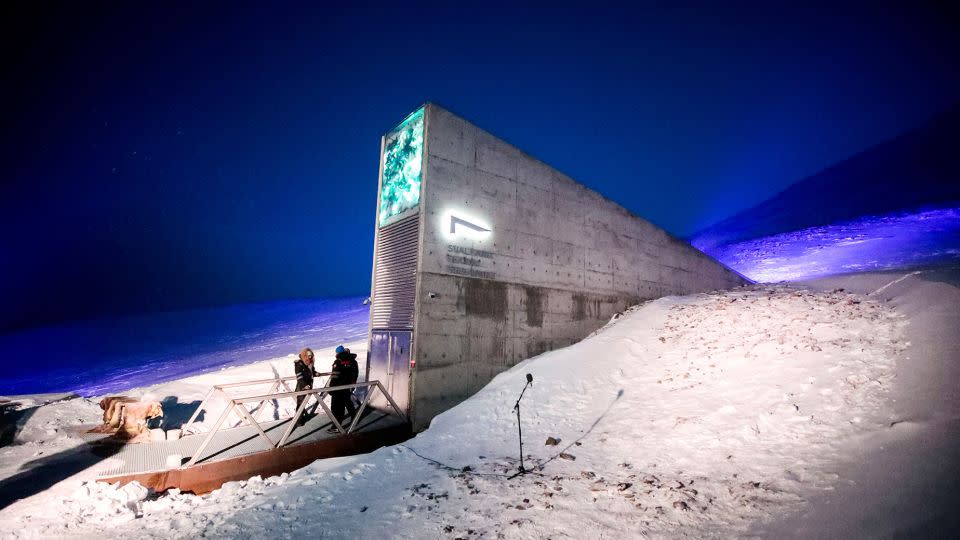Sign up for CNN’s Wonder Theory science newsletter. Explore the universe with news about fascinating discoveries, scientific breakthroughs and more.
A group of scientists devised a plan to safeguard Earth Species in a cryogenic biorepository on the moon.
With the aim of saving species in the event of a disaster on Earth, the plan uses craters that are permanently in the shade and therefore cold enough to allow cryogenic preservation of biological material without the use of electricity or liquid nitrogen, according to research by a group led by by Smithsonian scientists, published last week.
The article, published in the magazine Biosciencesis based on the successful cryopreservation of skin samples from a fish and describes a method for creating a biorepository that would keep samples from other species safe.

“Initially, a lunar biorepository would target the most at-risk species on Earth today, but our ultimate goal would be to cryopreserve the majority of species on Earth,” said Mary Hagedorn, a research cryobiologist at the Smithsonian’s National Institute of Zoo and Conservation Biology ( NZCBI). ) and main author of the article.
“We hope that by sharing our vision, our group can find additional partners to expand the conversation, discuss threats and opportunities, and conduct the research and testing necessary to make this biorepository a reality.”
The idea for the lunar biorepository is inspired by the Global Seed Vault in Svalbard, in Arctic Norway, which stores more than a million seed varieties with the aim of safeguarding crop diversity.
The vault was threatened by a meltwater flood from thawing permafrost in 2017, highlighting the dangers posed by climate change, according to the statement.
While plant cells can be stored in arctic conditions, animal cells must be kept even colder, at least -320 degrees Fahrenheit or -196 degrees Celsius, to be preserved.
To reach the temperatures required on Earth, a supply of liquid nitrogen, electricity and human personnel is required.
But in the event of a global disaster, the supply of any of these three elements could be vulnerable, endangering the discussed biorepository.
To reduce this risk, Hagedorn and the team thought about how cryopreservation could be achieved passively, which is impossible on Earth, and landing on the Moon.
The lunar polar regions are home to craters that are in permanent shadow due to their orientation and depth, and can reach temperatures as low as -410 degrees Fahrenheit (-246 degrees Celsius).
The team then considered how to block radiation that would damage the samples’ DNA and proposed storing them underground or inside a walled structure made from lunar rocks. More research is needed to study the effects of radiation exposure on cryopreserved samples, as well as the effects of microgravity, according to the release.
“We are not saying what will happen if the Earth fails – if the Earth is destroyed biologically, this biorepository will not matter,” Hagedorn said in the statement.
“The goal is to help offset natural disasters and potentially increase space travel. Life is precious and, as far as we know, rare in the universe. This biorepository provides another parallel approach to conserving Earth’s precious biodiversity,” she said.
Rob Brooker, head of ecological sciences at the James Hutton Institute in Scotland, who was not involved in the research, said the paper “is an interesting and provocative paper that highlights the loss of Earth’s biodiversity and the critical need to increase our efforts by nature.” conservation.”
“However, a major concern is that the cost and effort involved in establishing such a resource on the Moon would be very substantial and would undermine ongoing conservation efforts, including meeting existing international commitments and plans to protect nature,” he said. Brooker to CNN.
Sally Keith, senior lecturer in Marine Biology at Lancaster University, who was not involved in the research, had similar concerns.
“The broad approach offers an interesting thought experiment and could lead to innovative technological development, however, I have difficulty seeing its use in the urgent fight to minimize the rapid loss of biodiversity,” she told CNN, adding: “How many forests, reefs Could corals and freshwater lakes be better conserved now, for the cost of launching a rocket to the Moon?”
For more news and newsletters from CNN, create an account at CNN.com
































